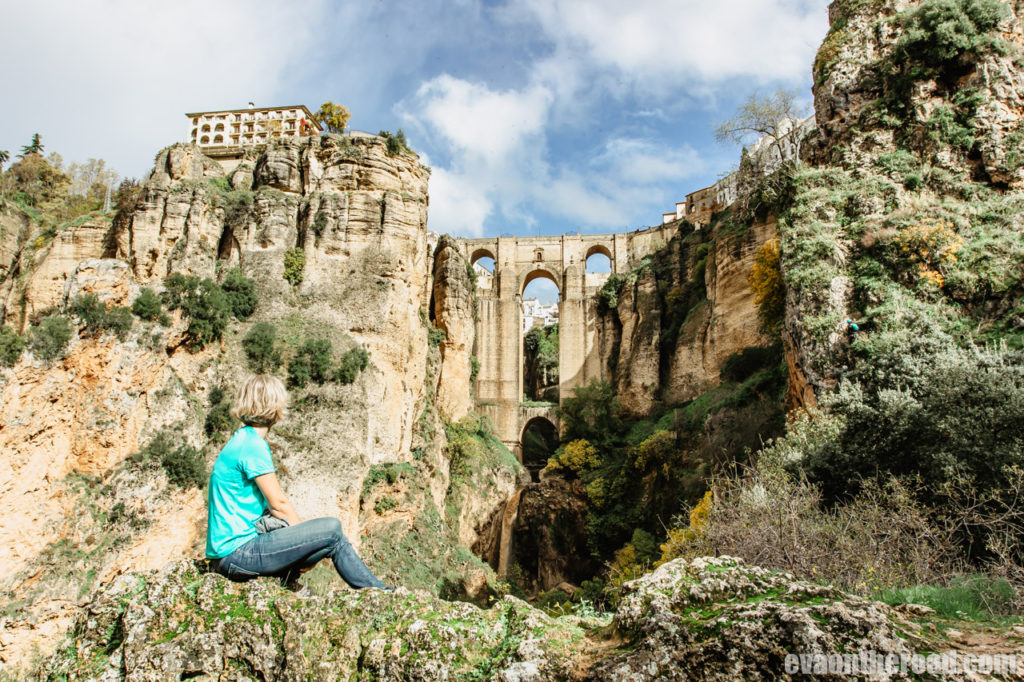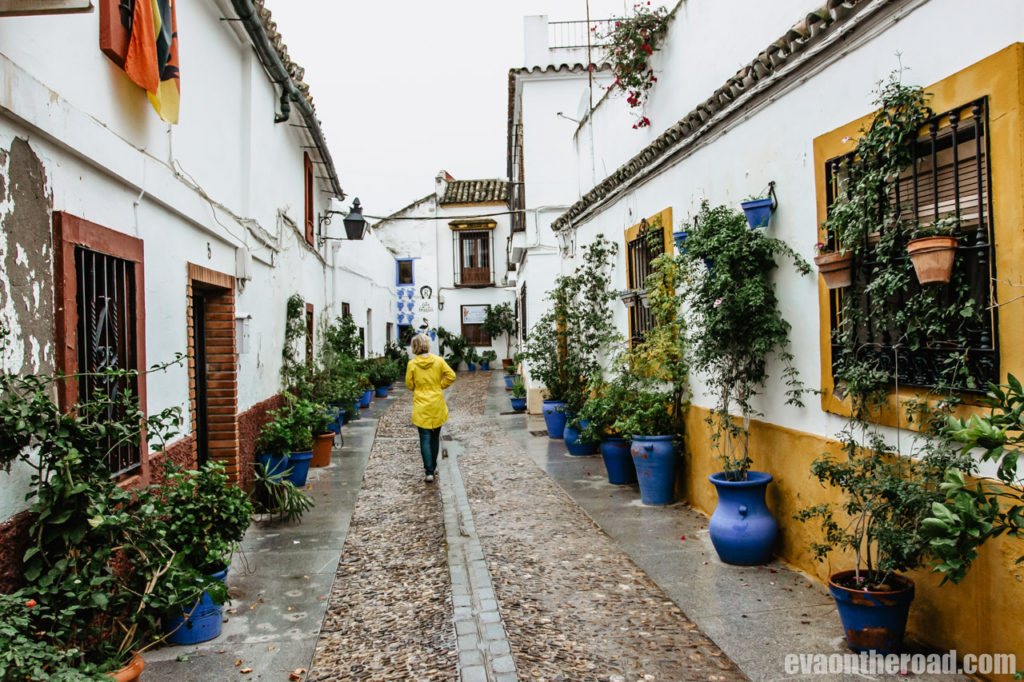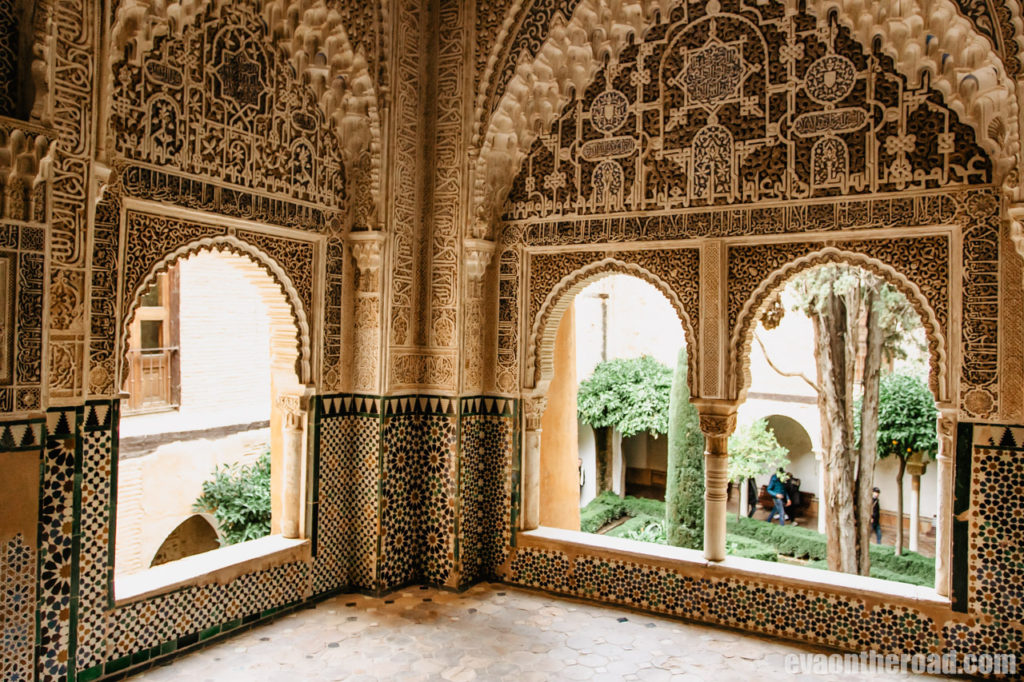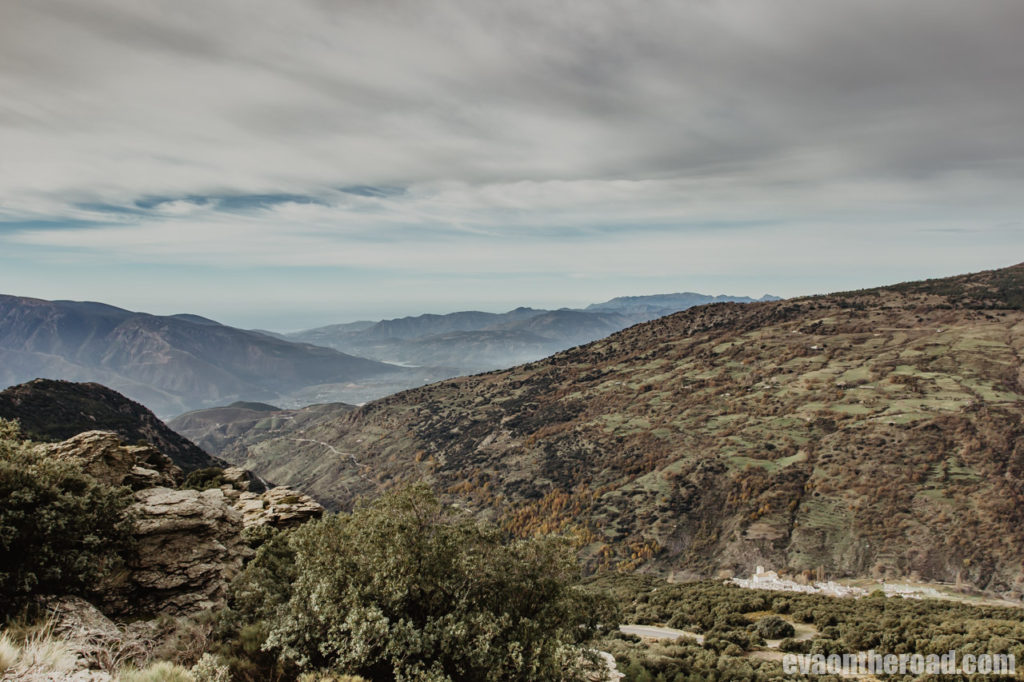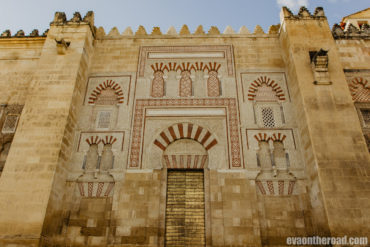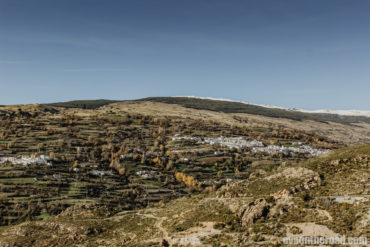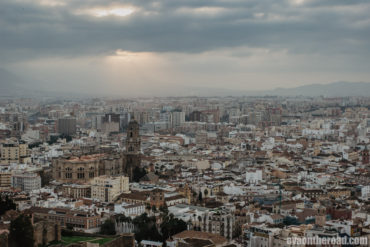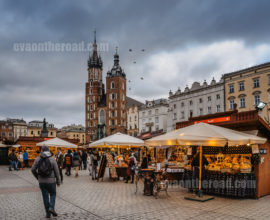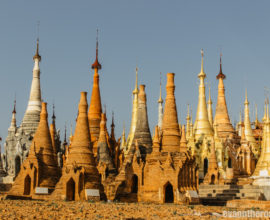Unrestrained Andalusia – what to see in 15 days
Do you long for admiring ancient monuments, relaxing on long beaches, climbing up the mountains, adrenaline in bull arenas and endless evenings in the rhythm of flamenco over a glass of delicious red wine and famous tapas? Then you have to go to Andalusia in the south of the Iberian Peninsula. As a bonus, Andalusia is one of the warmest places in Europe, so you can visit it any time, even in winter when you will not suffer from a terrible heat. Still hesitating? Read what this part of Spain can offer you and where to go.
Obsah článku
Public transport around Andalusia is good, but we did not want to check the timetables all the time, so we rented a car. Renting a car in Spain is cheap if you do not want to return it in a different place from where you started. We wanted to make a big tour, so we rented a car in Malaga, where we arrived, and returned it in Valencia, where we departed. It cost us 120 euros extra. The rent for 15 days was otherwise ridiculous – EUR 28. The map shows the places we visited in 15 days. I intentionally do not put Valencia there, because it is not in Andalusia.
Málaga – the gateway to Andalusia
With frequent flights, Málaga is a gateway to Andalusia for tourists. It has a beautiful historic centre over which a castle rises on a hill, close to the centre there are wide beaches. Art lovers can admire collections of Pablo Picasso, a local native. From Málaga towards the south there is Costa del Sol (Sunny Beaches), where people wishing to relax can catch some sun while being washed by the waves of the Mediterranean Sea. If you are not beach-wearers, it would be a pity to stay here, because the coast itself is not so nice in this part. It took us only one day and a half to explore the city and set out to other parts of Andalusia. A detailed guide to Málaga can be found here.
Olvera – typical “pueblo blanco”
To select the most beautiful pueblo blanco (white town) in Andalusia is difficult. They are all incredibly beautiful, seated on a high ridge with steep cliffs, narrow streets, a sleepy centre and a harsh past. Whichever you choose, you won’t make a mistake. In addition, while traveling through Andalusia, you will come across several such towns, so visit more and then decide which one you like the best. Our first pueblo blanco was Olvera, an ancient hiding place of bandits. Today, the town is famous for olive oil, neoclassical church and a castle nesting above it on a rock. From Málaga it took us there one hour and half (about 100 km).
Ronda – a town on the edge of a cliff
You must not miss this town surrounded by the massif of Serranía de Ronda. It is one of the most beautiful towns in Andalusia, where the Moorish past meets Christian presence at every step. The town has almost 40 thousand inhabitants, but its historic centre is pleasantly small and quiet, so you can get anywhere on foot without any problems. Ronda was founded in the 9th century BC and it is one of the oldest Spanish towns. Hemingway also mentions its history in his novel For Whom the Bell Tolls. In Ronda you will find a bullfighting arena where bullfighting has been held for over 200 years. If you walk through the adjacent park, you will have the whole valley at your fingertips. When you stand on the edge of the nearly one-hundred-metres high El Tajo rock gorge, you will catch your breath. But the best view of the city is from the valley. When you cross the Puente Nuevo (a bridge connecting the old and the new part of the town), you will find several streets that will lead you to the bottom of the gorge. After enjoying the roaring waterfall and majestic parador (hotels located in former castles, palaces and monasteries) at the edge of the gorge, head back to town and head to the other side of the gorge. There you will find free-access gardens, from which you will see the old town from the other side, and the river will roar beneath you.
Gibraltar – a rock full of monkeys
Gibraltar is not in Andalusia, but it is its small British neighbour worth visiting while traveling through southern Spain. It has an area of 6.5 km², the border with Spain is 1.2 km long and from the other side there is sea. In a special way, Spanish warm-bloodedness and cordiality are mixed here with British intimacy and courtesy. Another curiosity is that you will meet more monkeys (tailless Macaques) than dogs here. Some have bigger teeth than wolfdogs, and looking for food in tourists’ backpacks is a variegation of the day for them, so watch out for your belongings and don’t mess with them (otherwise they might attack you). The locals spoil the monkeys because the legend says Gibraltar will be British as long as the monkeys live there. Alongside monkeys, Gibraltar attracts visitors with its unique location and view of Africa. You can enjoy it from a 426 m high rock (Gibraltar is nicknamed “The Rock”). You can walk up to this limestone rock, which used to serve as a fortress, or you can use a cable car (return ticket costs 15.50 Gibraltar pounds). What else can this piece of Britain in southern Europe offer you? Classic red telephone box and mailbox, fish and chips and driving left. If you are traveling by car around Andalusia, I recommend you reach the border (La Linea de la Concepcion), park in the adjacent streets or in one of the parking lots here and walk across the border. Right beyond the border, there is bus Nr. 5, which will take you to the centre for EUR 2.10.
Tarifa and Duna de Bolonia – surfers’ paradise and sand dunes
Tarifa is a port town on the southern tip of the Iberian Peninsula (Costa de Luz – Coast of Light), where waves of the wild Atlantic meet calm Mediterranean Sea. Here you can find the southernmost point of continental Europe (Cape Tarifa). In good weather you will see the coast of Africa (only 14 km away) and the cliff of Gibraltar. Everybody will find something here. Sharp Atlantic winds attract windsurfing, surfing and kitesurfing fans, sandy beach lovers can enjoy the 10 km long Playa de los Lances, and sea near Tariffs is also one of the best places to watch whales and dolphins in Europe. You can see them from April to October, when they move between the Atlantic and the Mediterranean. The ancient city of Tarifa itself is also worth seeing. You will feel like in nearby Morocco. About 25 km north of the city along the coast you will find a European natural phenomenon – Duna de Bolonia, sand dune over 30 m high and 200 m wide. It is located in the Estrechon Nature Reserve and has been created by strong winds blowing from the Atlantic.
Cádiz – a seaside town surrounded by the Atlantic
Cádiz has an exceptional primacy – it is probably the oldest town in Europe, which was founded around 1000 B.C. by the Phoenicians. The town flourished during the times of Christopher Columbus, who set out on his expeditions from here, and then in the 18th century, when it became the centre of Spanish trade with America. Today’s Cádiz is mainly a port town with fishing and shipping industry. Although the town had been plundered several times during the Spanish Wars, you can still admire remarkable monuments today. One of the biggest attractions is the camera obscura – a dark chamber in the old Torre Tavira watchtower. Camera obscura is a box with a hole in one wall. In a dark, windowless room, there is a concave, horizontally placed white circle-shaped area in the centre, with a railing around which visitors stand. A guide controls the mechanical system, rotates the “camera” around the entire tower, and reflects the current events on the street. The device is a bit like a periscope, as the very first cameras used to work. After you see the darkroom, walk up to the tower. There is a beautiful view of the whole town and its surroundings. Besides that it is worth seeing the cathedral with a yellow dome dominating the Plaza de San Antonio, a huge pedestrian-only square, with its fountain surrounded by dozens of pots, and also the 4.5km long coastal promenade leading to Castillo de Santa Catalina (free entry) or a long pier leading to the Castillo de San Sebastián (closed). In summer, you can also enjoy swimming and ocean views on the town’s beaches. The landmark of the Plaza San Juan de Dios is the 18th-century city hall. We were excited about Cádiz and stayed for 2 days. There is a relaxed atmosphere, great tapas and we have also found one of the best accommodations in Andalusia (Spanish Galleon Lodge).
Córdoba – the city of two cultures
Córdoba is one of the cities that you should not miss. It boasts the impressive 8th-century Mezquita (Mosque) with an amazing orange patio (Patio de los Naranjos). Inside you will find 856 brick-white columns connected by arches, an 18th-century cathedral choir with mahogany benches and a baroque ceiling, or a prayer niche with golden mosaics facing Mecca. Yes, you read correctly. The mosque was built in Moorish style, but in the 13th century it was converted into a Christian cathedral. You can still admire a remarkable combination of Islamic and Christian elements. That is why it has been included in the UNESCO list. You must also visit the Alcázar de los Reyes Cristianos (Castle of the Christian kings), Puente Romano – the restored Roman bridge, Templo Romano – the remains of a Roman Temple, or Judería – a tangle of winding streets in the Jewish quarter. After you see all the sights, taste a local tortilla de patata specialty at the Santos Bar in the immediate vicinity of the Mosque. You can find a detailed guide to Cordoba and its surroundings here.
Granada – The pearl of Andalusia
This amazing city which lies at 800m above sea level and is overlooking the two thousand peaks of Sierra Nevada is rightly called the pearl of Andalusia. Therefore, also count on the fact that you meet here three times more people than everywhere else. The name of the city is associated with the pomegranate (granado), which is a symbol of the city. The main attraction of the city is Moorish architecture, dominated by the Alhambra palace fortress located on a hill above the city. From the outside it is quite ordinary with bare walls, but inside it hides the most beautiful gems. The Alhambra is the best example of Moorish architecture you can see in Europe. Its only downside is that during the high season, up to 6,000 visitors pass through it every day, so you can´t really enjoy this gem in peace. On the hill opposite Alhambra there is an amazing old Arab quarter of Albayzín, where you can get lost for half a day. It is characterized by houses called cármenes with Moorish decorations and walled gardens. In the labyrinth of narrow streets you will find many Arabic shops and tea rooms. Don’t forget to climb up to Mirador San Nicolas, the best viewpoint on the Alhambra. At sunset, you will fight for a place with a hundred similar people. In Granada you will also find a number of Christian monuments dominated by the cathedral and the adjacent Capilla Real (Royal Chapel), which serves as a mausoleum for Catholic monarchs. I can also mention the Monasterio de San Jerónimo, founded by Catholic monarchs, where nuns still live, Monasterio de San Vicente or Huerta de San Vicente, a house where the famous Spanish playwright and poet Federic Garcia Lorca lived. Granada is also a university city, making it live at night. You will not be bored here.
Sierra Nevada – ice guard of Granada
It would be a pity if you limited your visit to Granada to the city itself. An hour’s drive there is the highest Spanish mountain range, which stretches 75km east. The snow-capped peaks of the mountains, in sharp contrast to the hot Andalusia, form a stunning backdrop of Granada’s Alhambra. After all, the name of the mountains means, in translation, Snow Mountains. The peaks reach a height of over 2,000m, so it is no surprise that you can go skiing there in winter and enjoy a view of the Mediterranean Sea in a good weather. For the rest of the year, tourists enjoy endless hiking trails. But avoid summer holidays, when even the mountains are very hot. Choose one of the mountain villages as the base of your hikes – Órgiva, Bubión, Treveléz or Capileira as us. All of them are surrounded by majestic mountain peaks, out of which Mulhacén (3,479m) is the highest one, and they are crossed by several hiking trails with breath-taking views. Read more about them here.
Parque Natural Cabo de Gata – majestic cliffs and deserted beaches
If you are tired of crowded and resorts overbuilt Costa del Sol and you are looking for a place where commerce has not yet arrived, then do not hesitate to head to the east coast of Andalusia to the province of Almería. You will find a real gem here – dark volcanic rocks, turquoise sea, deserted beaches, wild nature and small fishing villages. For us, this area was a little paradise and if we could, we would stay longer. Cabo de Gata is one of the driest areas in Europe. The landscape is of volcanic origin, mountainous with grassy savannah. Attractions include the Salinas de Cabo de Gata, a salt lagoon, near the village of San Miguel, which attract flamingos and other migratory birds in spring. In addition to relaxing on empty beaches, you can also hike. There are countless routes to explore. We chose the village of San José as a starting point, which we had almost for ourselves in November. But it also had a downside – all the restaurants were closed, so we had to cook in our apartment. But it was worth the graceful twilight charm in a port with no people. You can easily walk to a neighbouring (even smaller) place of Los Escullos or La Isleta del Moro. The way there and back is about 16km long. Be well equipped with drink and food for your trip, as you will have no chance to buy supplies. The next day you can drive to a former gold digging village of Rodalquilar and to the Torre de los Lobos (Tower of wolves), a stone tower 5km away, which is a former watchtower with spectacular views of the area. You will have to leave your car parked about 2km below the peak, but the hike is worth the view. On your way back, go down up to the sea and enjoy a stony but empty beach. In November the water was icy, but we were swimming. If you still want to enjoy the hustle and bustle of the city, head to Almería, the centre of the area, or to a beach resort of Mojácar. For lovers of wandering, peace, sun and budget travel, Cabo de Gata is an ideal destination.
Cordoba is located in the very heart of Andalusia on the banks of the Guadalquivir River. Its history dates back to the years of BC, since the 7th century AD it had been the capital ...
Read MoreSurprisingly, the Sierra Nevada massif rises in hot Andalusia, not far from the famous city of Granada and barely an hour's drive from the crowded Costa del Sol coast. With its peaks exceeding 3,000 m, ...
Read MoreMálaga is a Mediterranean seaport on the famous Costa del Sol, where the temperature rarely drops below 15 degrees. It is a tangle of picturesque streets, as well as wide boulevards full of tapas bars, ...
Read More





